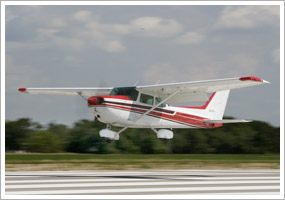| The following stories from the May 8, 2009, edition of AOPA ePilot were provided to AOPA members who expressed an interest in the particular subject areas. Any AOPA member can receive information tailored to their areas of interest by updating their preferences online. - My ePilot -- Turbine Interest -Falcon 2000LX certifiedDassault Falcon announced the FAA certification of its Falcon 2000LX, a longer-wingspan version of its popular Falcon 2000EX long-range business jet. Read more >> Emivest restructures, ramps up pilot trainingEmivest Aerospace, formerly known as Sino Swearingen, has restructured the company with layoffs at its Martinsburg, W.Va., plant as it matches personnel to current production levels. The SJ30 is a six-seat business jet powered by two Williams FJ44-2A engines and capable of Mach .83 (486 knots) at 49,000 feet with a range of 2,500 nm. It will be built at Martinsburg and San Antonio, Texas. Read more >> TRAINING TIPsMinimum float’
A familiar dilemma? Think of it as a rite of passage in flight training. “I can land in crosswind conditions but seem to float down the runway in calm weather. My instructor has to take over every time. Any suggestions would be appreciated,” wrote a student pilot in the March 2000 AOPA Flight Training “Since You Asked” column.
Here’s a two-step remedy: First, try to visualize what happens when a landing aircraft flying a little too fast encounters the reduced drag of ground effect. “On landing, ground effect can exact penalties for excess airspeed because the same drag reduction may create or prolong ‘floating’ caused by an excessively fast approach,” explains the Jan. 31, 2003, “Training Tip: Ground effect: Playing the float."
Combine that insight with a sharpened focus on your own airspeed management. Here’s what flight instructor and aviation humorist Rod Machado specifically advised in response to the student pilot’s question: “Unless the airplane's manual suggests otherwise, try a final approach speed of 1.3 V SO—that's 30 percent above the stall speed for the flap configuration used. Now the airplane is operating close to the bottom of its drag curve. Increasing the angle of attack for the roundout and flare results in an increase in induced drag, which minimizes your chance of floating.”
With a little practice, this solution will produce the minimum-float result you want. TRAINING PRODUCTSFollow 'The Finer Points' on TwitterThe Finer Points flight instruction video and podcast series, hosted by certificated flight instructor Jason Miller, has expanded to Twitter. Just how much flight training wisdom can be dispensed in 140 characters? Plenty, it seems. Here are a couple excerpts: “When landing in a crosswind you sideslip the airplane. This exposes the fuselage to the relative wind and increases drag. Watch your speed.” And, “Using the autopilot can be an AWESOME tool for learning, making it much easier to understand complex operations under IFR in the airplane.” |



